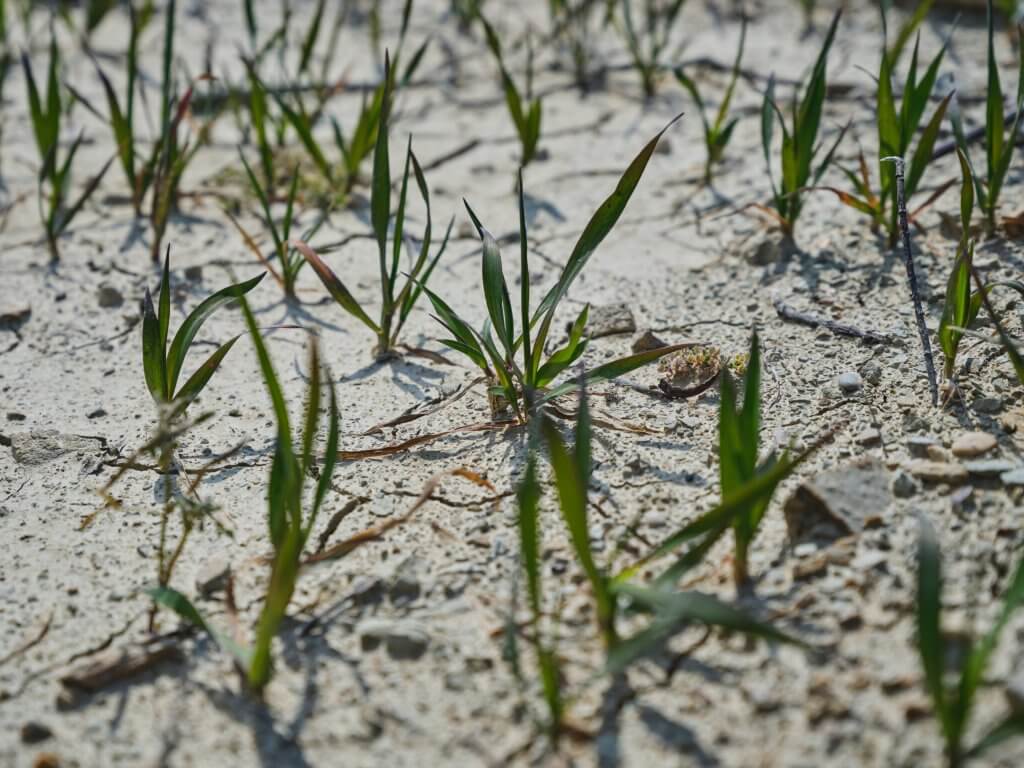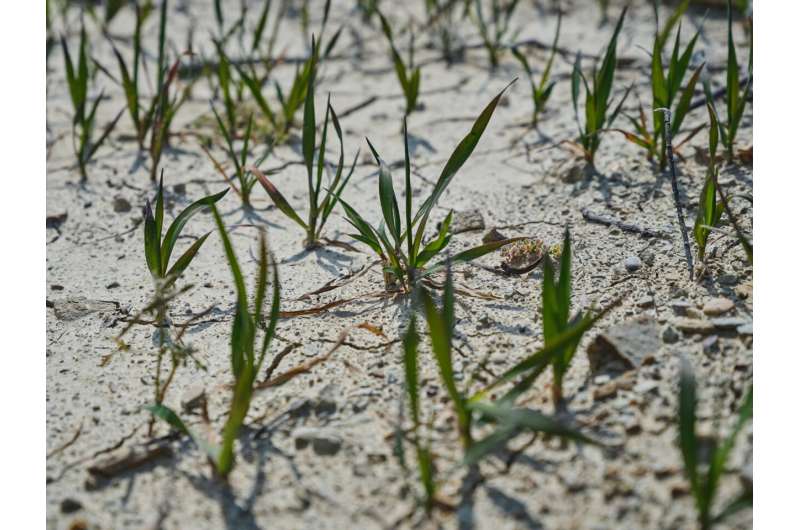
Satellites document effects of heat waves on plants (Image Credit: Phys.org)

A new scientific study shows how periods of drought affect photosynthesis throughout the course of the day. The study found that plants in regions that are typically dry increase their CO2 intake during the morning hours during a heat wave and decrease photosynthesis in the mid-day and afternoon. Researchers analyzed data from new-generation geostationary satellites.
Dr. Benjamin Dechant is a postdoctoral researcher at Leipzig University and conducts his research at the Synthesis Center of the German Center for Integrative Biodiversity Research (iDiv). Dechant, a physicist and ecologist, focuses his research on the spatial-temporal patterns and dynamics of photosynthesis of plants as well as on the properties of leaves and treetops.
The data for the study were gathered in part during a heat wave in the U.S. in 2020. Dechant contributed to the publication by the South Korean research group and discussed the most important findings in an interview.
Dr. Dechant, when it’s unusually hot and dry, plants shift their photosynthesis activity to the morning hours. Why is this finding so important for research?
Although this insight isn’t new as such, it had previously only been based on small-scale studies of individual types of plants or ecosystems, for example at the level of a forest area, and had not yet been observed at a larger scale with satellites. The new study is the first to quantify this shift toward the morning across the entire continental U.S. based on satellite measurements. The results could be used to evaluate and improve simulation results of vegetation models, for example, as these are important for predicting the global carbon cycle.
As global warming increases, the phenomenon of shifted photosynthesis activity will probably occur more frequently. What effects can this have for individual plants but also for entire ecosystems?
To carry out photosynthesis, plants have to open the pores on their leaves, and this causes water to evaporate. During droughts and heat waves, individual plants need to minimize their water loss while still maintaining a minimum amount of photosynthesis. If these kinds of conditions continue for a longer period of time and the plants can’t take in sufficient amounts of water through their roots, then this could lead to more plants dying, especially types of plants that are not adapted to such extreme environmental conditions.
At the level of ecosystems, the drastically reduced evaporation of water from the leaves at later times of the day could also influence temperatures. This water evaporation typically cools the air, and the cooling effect will be decreased compared to normal conditions. That could have a negative effect on animals that live in these ecosystems, for example, and of course could also have a tangible effect in cities. It could also lead to feedback effects in which droughts are intensified due to the reduced evaporation.
The research group you participated in evaluated data from geostationary satellites for the study. Those are satellites that are always above the same spot of the Earth’s surface. What makes these satellites so valuable for your research?
Geostationary satellites have been used for communication purposes and weather observations (e.g., hurricanes and cyclones) for decades, but they had only limited utility for vegetation research. The newer kinds of geostationary satellites have been equipped with sensors that also cover the part of the electromagnetic spectrum needed to observe vegetation.
Even though the spatial resolution of these geostationary satellites isn’t as high as that of “conventional” satellites, they have the considerable advantage of having a very high temporal resolution between five minutes to one hour. That enables us to carry out relevant measurements continually throughout the course of a day, something that is otherwise only possible with measurement towers on the Earth’s surface.
With this technology, researchers can also get far more measurements under cloudless conditions. This is also important for studies working with seasonal time scales, for example plant phenology, and is key in regions with greater cloud coverage such as the tropics, which play an essential role in the global carbon cycle.
In the future, there will be a network of several geostationary satellites taking similar measurements that cover almost the entire globe. One of these will be the ESA satellite Sentinel-4, which will be sent into orbit next year as part of the highly successful Copernicus program.
More information:
Xing Li et al, New-generation geostationary satellite reveals widespread midday depression in dryland photosynthesis during 2020 western U.S. heatwave, Science Advances (2023). DOI: 10.1126/sciadv.adi0775
Journal information:
Science Advances
Provided by
Leipzig University
Satellites document effects of heat waves on plants (2023, August 12)
retrieved 27 September 2023
from https://phys.org/news/2023-08-satellites-document-effects.html
part may be reproduced without the written permission. The content is provided for information purposes only.





